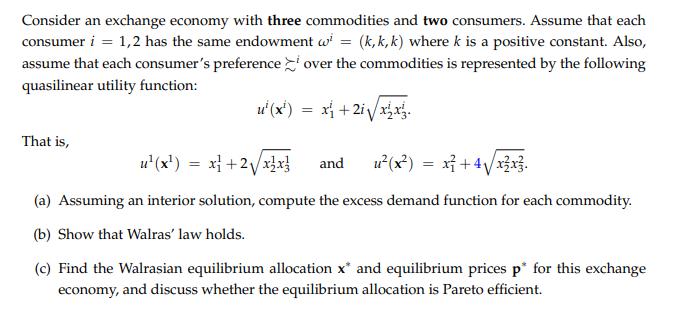Answered step by step
Verified Expert Solution
Question
1 Approved Answer
Consider an exchange economy with three commodities and two consumers. Assume that each consumer i = 1,2 has the same endowment wo = (k,

Consider an exchange economy with three commodities and two consumers. Assume that each consumer i = 1,2 has the same endowment wo = (k, k, k) where k is a positive constant. Also, assume that each consumer's preference over the commodities is represented by the following quasilinear utility function: u(x) = x + 2xx. That is, u(x); = x+2xx and u(x) = x + 4xzxz. (a) Assuming an interior solution, compute the excess demand function for each commodity. (b) Show that Walras' law holds. (c) Find the Walrasian equilibrium allocation x* and equilibrium prices p* for this exchange economy, and discuss whether the equilibrium allocation is Pareto efficient.
Step by Step Solution
★★★★★
3.29 Rating (158 Votes )
There are 3 Steps involved in it
Step: 1
a The excess demand function for each commodity can be defined as the difference between the total demand and total supply in the market The total demand is the sum of the demands of all consumers whi...
Get Instant Access to Expert-Tailored Solutions
See step-by-step solutions with expert insights and AI powered tools for academic success
Step: 2

Step: 3

Ace Your Homework with AI
Get the answers you need in no time with our AI-driven, step-by-step assistance
Get Started


